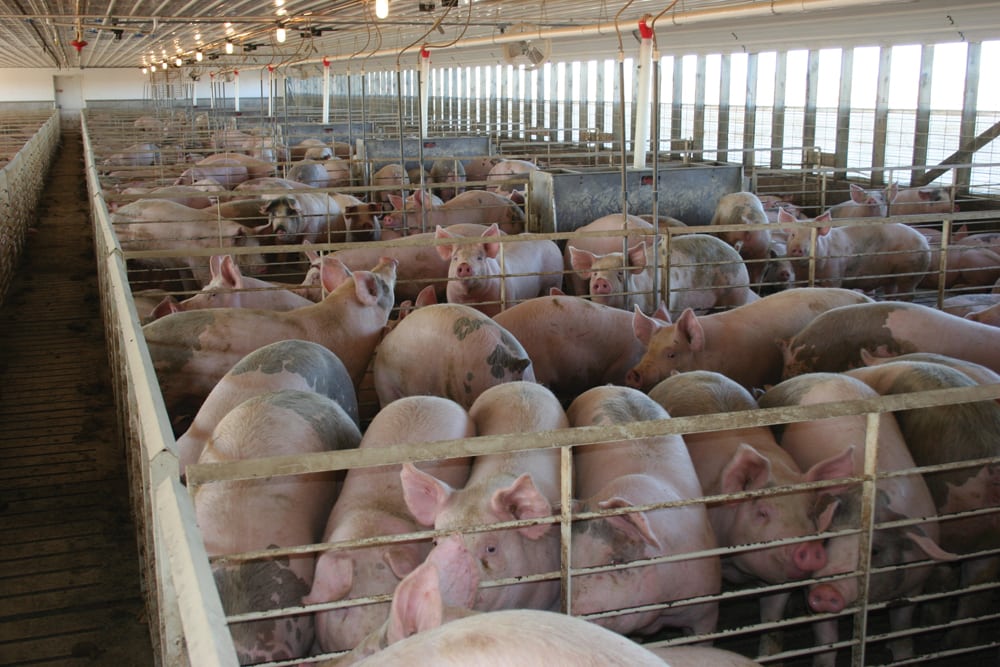Porto Alegre, December 13, 2023 – The year of 2023 is coming to an end, a year of great challenges for Brazilian pig farming. Prices moved sideways practically the entire year, with no room for progress, as a result of high domestic availability, even with the strong increase in exports. There was greater diversification of destinations, as a result of the narrowing of business and the opening of new markets in Brazil. However, the price per ton slowed down over the year, especially in the second half, reducing the industry’s margins, which is bad for the evolution of pig prices in the interior of the country. The decline in the cost of animal nutrition was positive for the sector, but unable to bring healthy margins to pig farmers. National pork production must adapt to the challenges that will arise in the future.
December is typically positive for consumption, considering the greater capitalization of families, due to the arrival of salaries, thirteenth salary, and bonuses into the economy. In addition, there are temporary hires, and Christmas and New Year festivities. The big issue is that, once the seasonal effects end, domestic demand at the final tip and replacement between wholesale and retail tend to lose strength. The decline in consumption is normal in the first four months of the year, considering high temperatures and extra expenses and taxes paid by households. The prices of competing proteins must be closely monitored, which can help with issues related to attractiveness. Chicken has been showing more adjusted prices due to the slowdown in housing.
Therefore, prices all over the pork chain must struggle to be sustained in the first months of 2024, as pork production will continue to advance. At the same time, the cost of animal nutrition must remain stable in the country, a factor that directly impacts profitability. Corn has tried to go up through speculation about the evolution of the next crop. Summer corn supply tends to be short and stimulate prices. On the other hand, the soybean crop will be large, even with climate risks, and it should also be considered that Argentina’s production is forecast to surpass by far the one registered this year.
Another issue for the coming few months is Brazil’s pork exports, particularly the price per ton. Brazil must keep exporting around 100 thousand tons a month in the first half of 2024, which will help to reduce domestic supply a little during the sector’s most challenging period. On the other hand, the price per ton must not find room for sharp highs, since Brazil’s largest importer, China, is facing a severe crisis due to a supply surplus. Losses in the sector in China are growing, and many farmers are accelerating animal sales, pushing prices down. Furthermore, demand in China is being impacted by the economic slowdown, reducing public confidence. The Chinese should act with reduced impetus on imports and bargain prices in the first months of 2024.
Attached is the forecast for the availability of Brazilian pork, referring to the first half of 2024 (SAFRAS & Mercado forecast). Brazilian exports in the period are forecast at 608.1 thousand tons, up 5.2% from the 578.2 thousand tons registered between Jan-Jun/23. Countries such as the Philippines, Vietnam, Chile, and Singapore must keep buying good volumes from Brazil. China, despite the slowdown in purchases, remains the main destination for Brazilian pork.
As for production, investments are maturing in Brazil, and new progress is expected in 2024. With the trend of worsening activity margins, pig farmers may return to the strategy of reducing the average weight of animals. For the first half of 2024, Brazilian production was estimated at 2.653 mln tons, up 2.4% from the 2.591 mln tons registered in the same period this year.
Given export and production numbers, Brazilian domestic availability is expected to grow 1.6% in the first half of the year, reaching 2.045 mln tons.
Follow the Safras Agency on our website. Also follow us on our Instagram and Twitter and stay on top of the main agribusiness news!
Copyright 2023 – Grupo CMA

